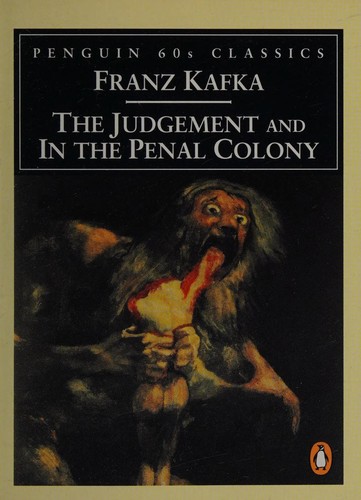Thoughts on reading In the Penal Colony by Franz Kafka.

Franz Kafka’s In The Penal Colony serves as the quintessential Kafkian tale, offering a brutal critique of an unsavory aspect of society. The target of In The Penal Colony is justice. Kafka’s exploration of the ambiguity of justice results in a fascinating contradiction: if our ideas of justice are malleable, then any sentence imposed as a result of that justice must be malleable. But this is where the contradiction lies, for a sentence is final. Punishments do not have the luxury to evolve, instead they are as concrete as the buildings that house the punished. In The Penal Colony serves as a perfect representation of this phenomena. In Kafka’s tale, the apparatus serves as a symbol for the unchanging nature of punishment, while the characters, especially as related to the character arc of the condemned man, serve as an example of the chaotic nature of justice.
At its most abstract, In The Penal Colony is a story about a man being punished. The condemned man does not know the nature of his crimes nor the nature of this punishment. He also does not speak the language of the officer or the explorer. Not only is the condemned man acutely ignorant, but he is helpless too; he is physically restrained to the apparatus while having no ability to defend his innocence in regards to the alleged crime. The condemned man’s situation reverses on a whim, impartial to his action. because of the explorers rebuke of the officer’s ways. The condemned man’s unstable situation is a direct reflection of the fickle nature of justice: they are both beholden to whomever is currently in power. As the officer transitions from the prosecutor to a victim of justice, so too do we see a drastic transformation in the condemned man. After having obtained his freedom, the explorer notes of the condemned man,
Perhaps the condemned man felt it incumbent on him to amuse the soldier (219).
Once freed,the condemned man feels he owes some sort of retribution to his former punishers, who minutes ago were teasing him with rice pulp and preparing his torturous execution. The explorer, the stand in for the reader from this perspective, knows that the condemned owes the punishers nothing, as it was not out of mercy that the execution failed. Yet both the condemned and the soldier understand the fleeting nature of justice, and act in willful ignorance against the inane principle. Now comrades, the condemned man and the soldier leave the site of the apparatus with the explorer, only to find themselves abandoned in the penal colony by the explorer as the story ends. This abandonment represents one last vicious turn for the system, as the consummate image of righteousness in the story - the explorer - returns the condemned man to his original state, as a victim of undefined justice.
In The Penal Colony is an intense exploration on the chaotic nature of justice, an idea which is represented throughout the story by the character arc of the condemned man and his relationship with the apparatus.